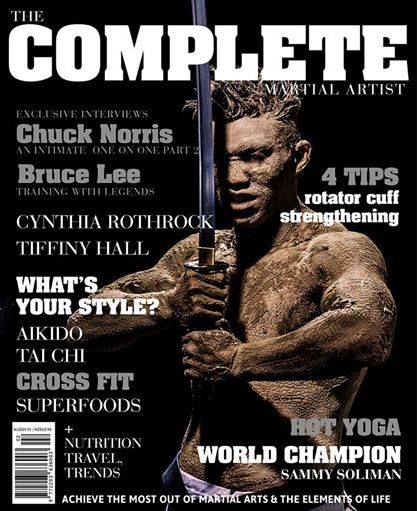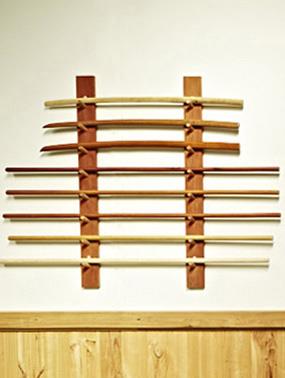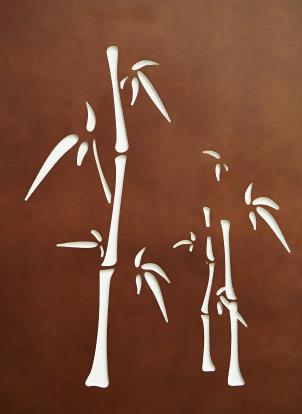
The Complete Martial Artist. Aikido
“When an opponent comes forward, move and greet him; if he wants to pull back, send him on his way.”
WHAT IS AIKIDO?
Aikido is a modern martial art that uses harmony and natural body movement to dispel any aggressive attack. It was developed in the 1920s in Japan by Moriteru Ueshiba (referred to as O-Sensei by his students) arising out of his study of various martial arts and his spiritual beliefs. There are many ways to translate the kanji (characters) that represent Aikido. “Ai” can be interpreted as “harmony”, “to combine” or “love”; “ki” is commonly thought to mean “energy” or “spirit”; and “do” as a way or path, So, Aikido can be said to be “the way of harmony”.
DEFINING CHARACTERISTICS
Aikido is characterised by graceful circular movements, throws and defending with an open hand. It also incorporates arm and wrist locks to neutralise an opponent. Unlike other martial arts, it does not involve grappling, punching or kicking, except for students who specifically want to learn how to defend themselves against such attacks.
Practitioners of Aikido learn how to blend with the attack, redirecting the force against their opponent. It relies on accurate timing and position so that you only need minimal strength to perform an Aikido movement. It is truly about being in the right place at the right time.
Aikido is unique as a martial art in that there are no fixed katas (sequences of moves). Beginners are taught a couple of common attacks (punch, vertical and angled strikes with the arm), as well as defence techniques (simply numbered 1 to 5, and a few others). These can be combined to create an infinite variety of forms to practice.
Today’s techniques will be different tomorrow. Do not get caught up with the form and appearance of a challenge. The art of peace has no form,ultimately you must forget technique. The further you progress, the fewer teachings there are. The great path is really no path.”
– O-Sensei
O-Sensei’s own style of Aikido was always evolving. He rarely taught the same technique twice, and his students had to be constantly alert and able to respond spontaneously.
HISTORY OF AIKIDO?
O-Sensei was born in 1883; He was quite weak as a child, so his father, a welt-to-do farmer, encouraged him to pursue physical activities like sumo and swimming. He grew into a healthy young man and served in the army during the Russo-Japanese war. When he returned home in 1907, his father converted the family barn into a dojo (training hall) where he could train under a visiting judo master.
However, the death of his father in 1920 and his growing interest in spirituality made him reflect on his martial arts practice. In 1925, O-Sensei named his approach Aikido, calling it “the union of spirit, mind and body”.
Word started to spread of O-Sensei and his new martial art and it became very popular in Japan and around the world. The first overseas dojos were set up in France, New York and Hawaii in the 1950s. In the 1960s, Aikido started to be taught in Australia, England, Brazil, Argentina and Southeast Asia. O-Sensei passed away in 1969 at the age of 86.
THE ROLE OF THE KI
Historically in Japan, ki is a life force that permeates all living things and can be cultivated with breathing exercises and meditation. Using the breath is fundamental to Aikido. One technique is simply referred to as kokyo nage, or breath throw. Some instructors will finish a class with “misogi”, a breathing exercise to purify the body and mind, so that energy or ki can pass through your body freely.
Aikido students are also told to move from their “one point”, which is 3 fingers below the navel. This is where ki is concentrated, and it is the natural centre of gravity for a person. All movement that originates from this point will be balanced, as if “you are standing between heaven and earth”.
ADVANCING IN AIKIDO
Aikido uses a belt system. Some schools prefer coloured belts to distinguish the lower grades (from 5th to 1st kyu) while other schools use a white belt. Students need to pass a grading to be promoted to the next level. They are required to demonstrate proficiency both as nage and uke. After 1st kyu, students are promoted to a black belt, which begins as 1st dan. On average, it takes about 5 to 7 years of consistent training to go to from a complete beginner (no grade) to 1st dan, and it takes 2 to 4 years to then advance from 1st dan to 2nd dan.
WEAPONS IN AIKIDO
O-Sensei had a strong interest in sword and spear techniques and incorporated their movement in relation to the hand techniques. The weapons used are the jo (wooden stick), tanto (short wooden knife) and bokken (wooden sword).
As a beginner, you would first start learning some techniques to familiarise yourself with the weapon, i.e. how to hold it, how to perform a proper attack. As you get more experienced, you learn how to receive being thrown by someone with a weapon, as well as how to disarm them.

WHAT TO EXPECT FROM AN AIKIDO CLASS
Many people are first attracted to Aikido due to the apparent ease at which the Aikido practitioner can throw their attacker away. However, it is common to feel like you have two left feet in the first year of training! Learning Aikido means overcoming your natural instinct to fight or run away when someone grabs onto you strongly.
The best way to start is to find a dojo and watch some classes. This enables you to decide if Aikido is right for you. Most dojos will often have a separate class for beginners. Classes usually start with some warm-up stretches, then the instructor will go through a few techniques and may end with some breathing exercises. Forward rolls, backward rolls and breakfalls are also taught.
On the mat, the student who performs the technique is called nage and the one who receives is called uke. Students take turns at being uke and nage as there are different things to learn in each role. As nage, you learn how to use the appropriate amount of strength, how to lead uke and how to position yourself correctly.
As uke, you learn how to respond quickly and roll out of situation safely. Training partners come in all shapes and sizes, so practicing the same form is different with a different partner. You learn to adjust for someone stronger or weaker than yourself.
The more experienced students also practise free sparring (jiu waza). This is when you face off against 3 to 5 opponents who will attack in a variety of ways, and you can choose to perform any Aikido technique on them. It goes on for just a few minutes until the instructor claps but can feel like eternity!
AIKIDO SCHOOLS AND STYLES
-Sensei allowed his senior students the freedom to go out and start their own schools. Today, there are 5 major schools of Aikido. They are:
* Shodokan Aikido: Established by Kenji Tomiki, one of O-Sensei’s earliest students and the only style to hold competitions.
* Yoshinkan: Established by Gozo Shioda, a pre-war student. This physical style of Aikido has been taught to the Japanese riot police since 1957.
* Iwama style: Established by Hitohiro Saito and characterised by practitioners starting the technique from a static position.
* Ki-Aikido: Established by Koichi Tohei, who focused on ki extension.
* Aikikai: Established by Kisshomaru Ueshiba, O-Sensei’s son, who continued to lead the organisation his father set up. It has been considered to follow O-Sensei’s later teachings.
O-Sensei’s own style had changed significantly over time. His pre-war Aikido, when he was a well-built young man, is closer to jujitsu and more martial. His post-war Aikido, when he was in his 60s, has more flowing movements and incorporates more spiritual elements. The difference between the 5 schools may lie with what O-Sensei was teaching at the time these senior students left to set up their own schools.

AIKIDO FOR EVERYONE
O-Sensei was only 155 cm tall, so being short is no excuse! When he was first establishing his dojo, many other martial arts practitioners wanted to challenge him. They included sumo wrestlers, kendo practitioners and judoka – and he convinced them all that good Aikido does not rely on brute force.
This is why Aikido is a great martial art for women. O-Sensei was also very progressive, he allowed women to train with men back in the 1920s. For women, you learn to deal with taller and heavier opponents in a safe training environment. There is a very strong emphasis on taking care of your training partners, so you would only work at their pace. Some Aikido practitioners are cancer survivors, others may have had previous joint surgery and some just have normal physical limitations from aging.
To injure an opponent is to injure yourself. To control aggression without inflicting injury is the art of peace.
– O-Sensei
Children too enjoy and benefit from training in Aikido, whether they are extremely shy, have too much energy, or suffer from a condition like Asperger’s. Through training, shy kids find strength and their own voice while active kids may discover calmness and stillness. Physically, it helps kids become more coordinated and understand how their bodies work. Children’s classes limit the type of wrist and arm locks used to prevent damage to their developing bodies.
AIKIDO AS SELF-DEFENCE
Aikido strictly speaking is not about self-defence, it is about neutralising aggression before a confrontation starts. This neutralisation could be verbal or physical movement to get out of the way. If things have escalated beyond that, then the principles of Aikido – staying relaxed, yielding to any force – will help you to find a way out of danger.
However, some senior students of Aikido say that their skills have saved them in other situations too. For instance, it has been reported that a cyclist who was hit by a car whilst riding was able to do a forward roll on the car’s bonnet and walked away unhurt.
The Complete Martial Artist December 2014